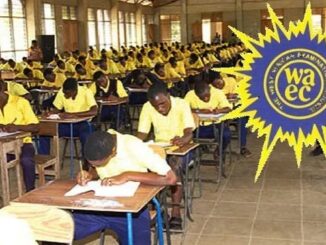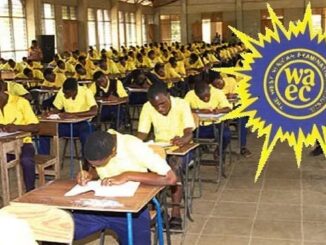Welcome to “Naijaclass Academy“ For Waec 2025 Biology Practical Questions & Answers
Thursday, 15th May 2025
Biology 3 (Practical), 9:30am – 11:30am (1st Set)
Biology 3 (Practical), 12:00pm – 2:00pm (2nd Set)
NUMBER ONE
(1a)
(i) Phylum: Arthropoda
(ii) Class: Insecta
(1b)
(PICK THREE ONLY)
(i) Presence of three body parts: head, thorax, and abdomen
(ii) Possession of three pairs of jointed legs
(iii) Presence of one or two pairs of wings
(iv) Presence of antennae
(v) Body covered with an exoskeleton
(vi) Undergoes metamorphosis
(1c)
Parasitism
(1d)
(PICK TWO ONLY)
(i) Hard mandibles for boring into seeds
(ii) Compact body to fit into small spaces
(iii) Brownish color for camouflage within beans
(iv) Strong legs for clinging to the seed surface
(v) Ability to lay eggs inside seeds for the protection of larvae
(1e)
(PICK TWO ONLY)
(i) Sun-drying to reduce the moisture content
(ii) Storing in airtight containers
(iii) Use of insecticides or fumigants
(iv) Freezing or refrigerating
(v) Use of natural repellents like dried pepper or neem leaves
(1fi)
(PICK TWO ONLY)
(i) Used as a food source rich in protein
(ii) Used for making bean flour and other processed foods
(iii) Serves as livestock feed
(iv) Used in crop rotation to fix nitrogen
(v) Source of income for farmers and traders
(1fii)
Protein
(1g)
(COMPLETE THE TABLE)
=Five Observable Parts of Specimen C=
(i) Leaf
(ii) Stem
(iii) Root
(iv) Flower
(v) Bud
=One Function of Each of the Parts to the Specimen=
(i) Carries out photosynthesis to produce food
(ii) Supports the plant and transports water and nutrients
(iii) Anchors the plant and absorbs water and minerals
(iv) Involved in reproduction and attracts pollinators
(v) Develops into a new flower or leaf.
======================================
WAEC BIOLOGY PRACTICAL
NUMBER TWO
(2ai)
SPECIMEN E: Multiple fruit (Composite fruit)
SPECIMEN F: Simple fleshy fruit (Hesperidium)
(2aii)
Axile placentation
(2aiii)
(PICK ONE ONLY)
(i) The seeds are attached to the central axis.
(ii) The fruit is divided into segments that radiate from the center.
(iii) Each segment contains seeds positioned along the central axis.
(iv) The central column is clearly visible in the transverse section.
(2bi)
SPECIMEN E: False fruit
SPECIMEN F: True fruit
(2bii)
SPECIMEN E:
(PICK ONE ONLY)
(i) It develops from an inflorescence, not a single ovary.
(ii) Multiple flowers contribute to the formation of the fruit.
(iii) Tissues like the flower stalk and bracts are part of the fruit.
(iv) It is a composite structure formed by the fusion of individual fruits.
SPECIMEN F:
(PICK ONE ONLY)
(i) It develops from a single ovary.
(ii) The fleshy part is derived entirely from the ovary wall.
(iii) It contains seeds directly enclosed within the fruit.
(iv) It forms after fertilization of the ovary.
(2ci)
(PICK THREE ONLY)
(i) Both are fleshy and edible.
(ii) Both contain seeds.
(iii) Both have protective outer coverings.
(iv) Both are succulent and juicy.
(v) Both are formed from the flowering parts of the plant.
(vi) Both fruits have visible segments or compartments.
(2cii)
(COMPLETE THE TABLE)
=SPECIMEN E=
(i) Multiple fruits formed from a cluster of flowers
(ii) Has a tough, spiky outer covering.
(iii) Does not have distinct internal segments.
=SPECIMEN F=
(i) Simple fruit formed from a single ovary.
(ii) Has a smooth, leathery rind.
(iii) Contains distinct segments filled with juicy pulp.
(2di)
Animal dispersal
(2dii)
(PICK ONE ONLY)
(i) The fruit is fleshy and attractive to animals.
(ii) It has a sweet taste that encourages consumption.
(iii) The seeds are protected from digestion, allowing them to pass through the digestive tract.
(iv) The bright color attracts animals from a distance.
(v) The seeds are scattered when animals discard the remains after eating.
================================================
`
NUMBER THREE
(3ai)
(IN TABULAR FORM)
(i) Test: Biuret test for protein
(ii) Observation: Violet or purple coloration
(iii) Inference: Protein is present
(3aii)
Biuret test
(3aiii)
Millon’s test
(3aiv)
(i) Milk
(ii) Meat
(3b)
(IN A TABULAR FORM)
(i) Test: Biuret test
(ii) Observation: No color change
(iii) Inference: Protein is absent
(3c)
(IN A TABULAR FORM)
-Five Observable Parts Of Specimen J-
(i) Eggshell
(ii) Egg white (albumen)
(iii) Egg yolk
(iv) Chalaza
(v) Egg membrane
-One Function of Each of the Parts-
(i) Protects the internal contents from damage and microbes
(ii) Provides water and protein for the embryo
(iii) Supplies nutrients (fats and vitamins) to the embryo
(iv) Holds the yolk in position within the egg
(v) Serves as an additional protective barrier
(3d)
(i) Kingdom: Animalia
(ii) Phylum: Chordata
(iii) Class: Aves
(3e)
(PICK ANY TWO)
(i) It serves as a rich source of high-quality protein in human diets.
(ii) It is used in baking and food industries (e.g., cakes, pastries, mayonnaise).
(iii) It provides income to poultry farmers and egg sellers.
(iv) It is used in the production of vaccines (e.g., for influenza).
(v) It is used in laboratory experiments and biological research.
(vi) It contributes to job creation in poultry production and distribution.
(vii) It is used in cosmetics and hair treatment products (e.g., egg masks).
(3f)
(PICK ANY TWO)
(i) Poultry farms
(ii) Domestic backyards
(iii) Open rural compounds
(iv) Forests (for wild birds)
(v) Water bodies (for ducks and geese)
(vi)Agricultural villages
(vii) Aviaries or bird sanctuaries
(3g)
(PICK ANY THREE)
(i) Domestic fowl (chicken)
(ii) Duck
(iii) Turkey
(iv) Goose
(v) Guinea fowl
(vi) Quail
(vii) Ostrich
How to get 2025 WAEC Questions and Answers before the exam?
==================
It is important to note that Naijaclass.com is the only website that has the above listed 2025 Waec Expo Daily Subscription Package. However, any website who copy any of the packages listed above will be reported for content theft and have their site removed from Google and other search engines.
==================







Be the first to comment